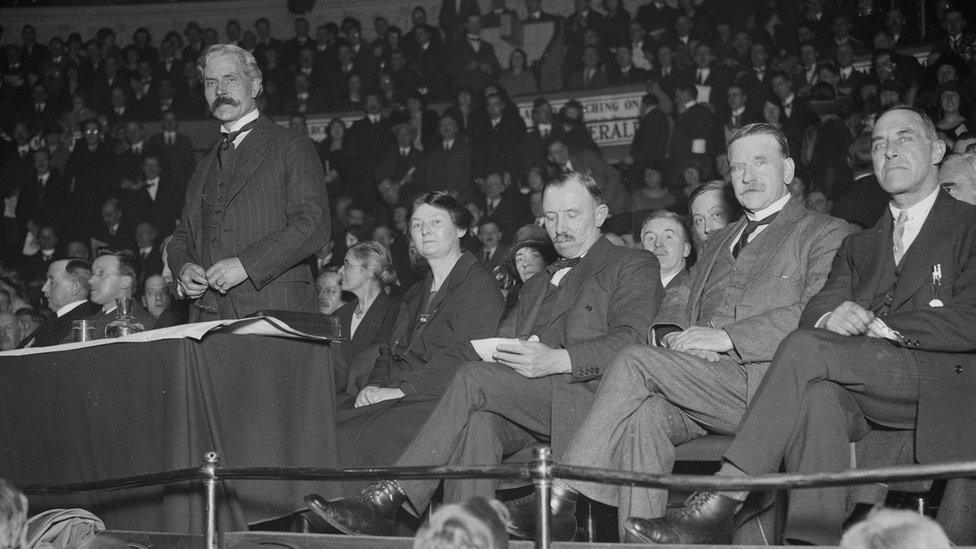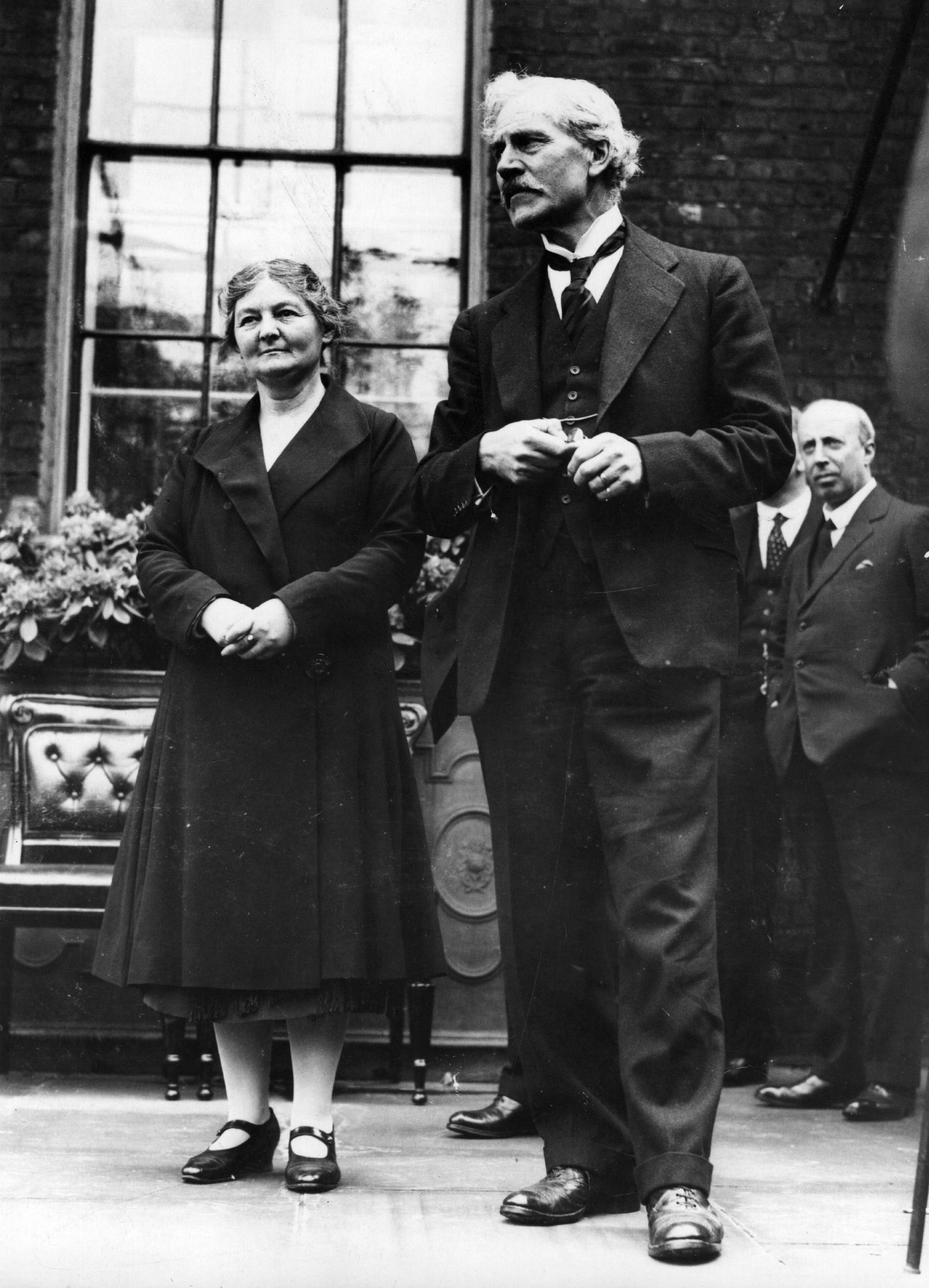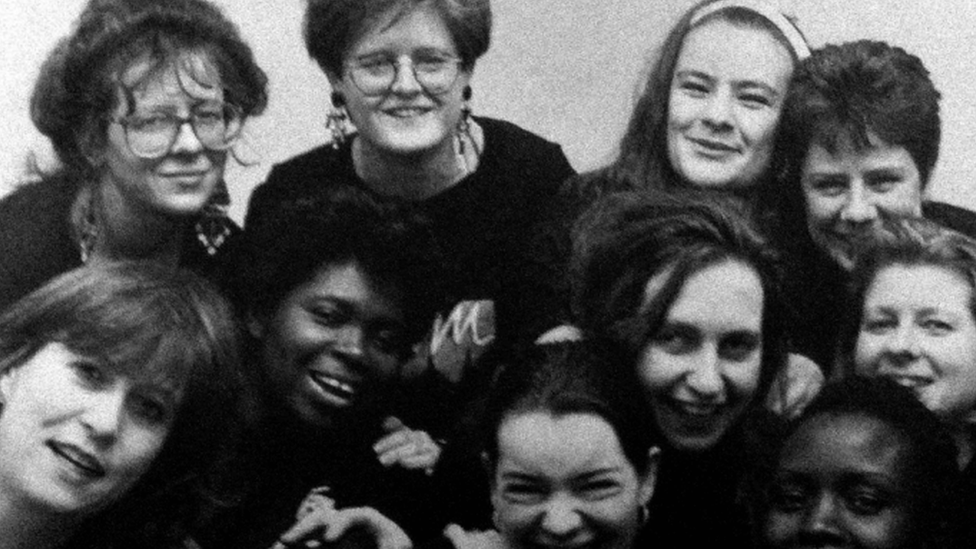Calls for trailblazer MP to get Westminster portrait
- Published

Bondfield made history several times in both the political and trade unionist fields
A campaign has been launched to have a portrait commissioned of one of the first female MPs.
Margaret Bondfield was Britain's first female cabinet minister, and became part of the new Labour Government on 22 January 1924.
Labour Women's Network (LWN) and Alison McGovern, the MP for the Wirral, are campaigning to have the portrait commissioned.
Mrs McGovern said she "deserves for people to know about her".
She told Emma Barnett on BBC Radio 4's Woman's Hour: "I wrote and asked the works of art committee in the House of Commons to look at it, which they are doing."
McGovern added that the art committee has been keen to address the "issue of the missing women".
Originally from Chard, Ms Bondfield, who died in 1953, aged 80, is little-known.

Bondfield, pictured here in January 1924, was one of the few women in British politics in the 1920s and 1930s
The campaign to have a portrait hung of Ms Bondfield in Westminster comes 100 years after she became the first female junior minister in 1924.
Ms Bondfield had a remarkably similar upbringing to another prominent 20th Century political figure with whom she shared a first name, working as a shop girl in her younger years.
Ms Bondfield first worked as an apprentice seamstress in Brighton and Hove before finding employment at stores in London.
She then carved a successful career in the trade union movement, becoming the first woman to chair the Trade Union Congress.
Passionate in campaigning for women's rights at work, Ms Bondfield believed in "universal suffrage", seeking to fill in gaps left by the suffragettes.

Bondfield, photographed here with Prime Minister Ramsay MacDonald, was part of the second Labour government, which was dominated by the Great Depression
By night, she wrote reports exposing the poor conditions she faced working in shops under the pseudonym Grace Dare.
Ms Bondfield became one of the first three Labour women MPs in the December 1923 General Election, which saw her elected to parliament for Northampton.
In 1929, she made history again when she became the first female cabinet minister, with another not coming along until 1945. Ms Bondfield was the first female privy councillor.
A number of factors are thought to have cast a shadow over Ms Bondfield's legacy.
The LWN has suggested that the history of trade unionism and the Labour Party is "seen and written as overwhelmingly male", which may have contributed towards the lack of awareness people have of Ms Bondfield's trailblazing presence in parliament.
"Her absence from - indeed, hostility to - what she perceived as a middle-class female franchise movement meant that she is excluded from suffrage history and was often viewed by its memorialists with active dislike," the LWN said.
"Although she remained loyal to the Labour Party throughout the 1931 crisis, her subsequent absence from parliament deprived her of a public platform."
As women usually ran for parliament in "more marginal seats", Ms Bondfield's career was "much briefer than those of many male colleagues", the LWN added.
Later in life, Ms Bondfield destroyed many of her papers, meaning there is no substantial record of her parliamentary career in the UK.

Follow BBC West on Facebook, external, X, external and Instagram, external. Send your story ideas to: bristol@bbc.co.uk , external
Related topics
- Published8 January 2024

- Published8 March 2022
